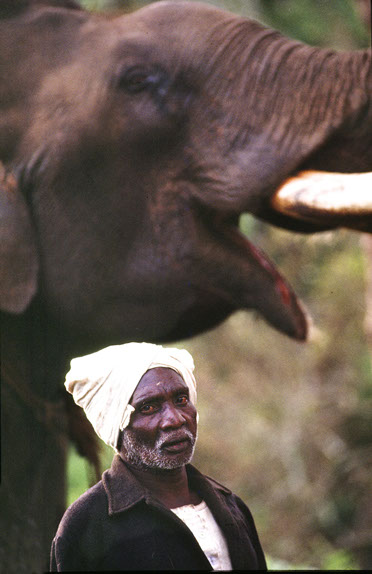Perhaps at no time in history has the elephant been so incredibly endangered. Not just the African elephants, virtually ALL elephants. Their tusks are a new form of gold.
The elephants are killed, their tusks removed and sent to China or Japan. In Japan they make chops from the tusks, everyone signs their name to anything with a chop and it HAS to be ivory by tradition.
In China, the demand is huge now that there is a new monied class. The myth is that elephant tusk dust is an aphrodisiac, which it isn't, but the dust laced with Viagra or Cialis is and thus myth of the magic continues unabated. It boils down to a pressure to kill more of the amazing beasts.
In both Asia and Africa there are other issues, of course, i.e., space to exist. The human populations continue to expand, and critical habitat is being lost at an enormous pace.
In the midst of this cauldron of change there is a fascinating aspect that still is extant, the man/elephant interface. That is the mahout or the person that controls and trains the elephants. A mahout grows up virtually living with his elephant. A grandfather may have been the first mahout of one animal, then his son, and then the son's son. Elephants live to be very old and they survive entire mahout family lineages.
E L E P H A N T S
Man and BEAST
Generations of a family of mahouts can have 3 or 4 mahouts for the same elephant during an elephant's lifetime. It isn't, or wasn't, just a job but life itself.
To observe a mahout instructing an elephant to move a huge log, or so many other tasks, is astonishing. The mahout sits barefooted with his feet behind the ears and imperceptibly directs his elephant to do exceedingly complex tasks. This relationship between a mahout and his elephant is personal and generally lifelong.
The story of the elephant and mahout cannot be explored here in any depth but the following images may give some insight into these tiny human beings integrating with a beast hundreds times their size and weight.
These extraordinary relationships, are disappearing just like the elephant itself. The need for these beasts to do work has been replaced by machines. For the remaining elephants food is scarce and expensive but the cult of the mahout persist and it is this fascinating relationship that I explore.
